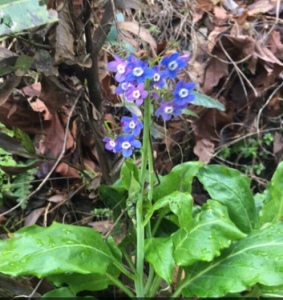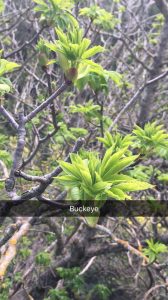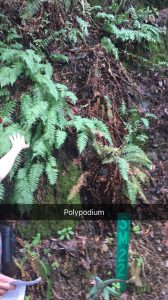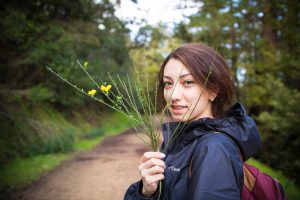Botany Field Journal #1
Date: 16 February, 2017
Location: Baltimore Canyon Open Space (37.940362, -122.56146), elevation: about 600 feet above sea level
This picture illustrates the directions from the University of San Francisco to Baltimore Canyon. We left campus at approximately 1 pm and joined the awesome car that Professor Paul drove.
Site description: This was a redwood forest. The dominant species were redwoods and ferns. Associated species included California bay, Douglas-fir, Madrone, Tanoak (subject to sudden oak death), and western hemlock.
This site was moist due to the rain and had a few sunny spots. There were waterfalls and some invasive species here as well. There were many tall trees (around 120 meters). Canopy was continuous/intermittent; shrub/ground layer absent to frequent. This area was damp but fire important for regeneration: trees had thick bark.
Species descriptions and digital collections (3): These pictures illustrate the three species of plants that I have chosen to describe in my blog.
1) Genus and Species: Cynoglossum grande
Common name: Houndstongue
Family: Boraginaceae
Species Description:
This species was similar to the “forget-me-not” flower. Houndstongue has very big leaves and early flowering. The stem is glabrous and erect. The leaves were entire and ovate to elliptic shaped. The flowers vary from purple to blue. We saw some purple flowers that had five petals with hairy sepal. The flowers had radially symmetical salverform corolla. There was panicle-like cymes inflorescence.
2) Genus and Species: Aesculus californica
Common name: California buckeye
Family: Sapindaceae
Species Description: this is a large shrub or tree species, which had palmate compound leaves. The tree is evergreen and deciduous. It grows 4-12 meters tall. The leaves were finely hairy. There were not flowers present but they are expected to have panicle-like inflorescence with fine hairs and white to pale rose flowers. This species was found on a slope. This tree had bright green and yellow colors. We observed this species at the beginning of our hike.
3) Genus and Species: Polypodium californicum
Common Name: California polypody
Family: Pollypodiaceae
Species Description: this species is summer-deciduous. The leaves were green with dentate margins. They seemed glabrous. The tips of the leaves were acute. We saw that stalks come out singly. There were many round sori, which contained the spores. The sori are shown as yellow/orange dots in the picture. This species was located on shaded canyons.
Narrative:
We left campus at one in the afternoon. The weather was unexpectedly nice and it only sprinkled a bit. As seen in these photos, Professor Paul taught us many different species. Then, we hiked down. We observed some interesting things such as an awesome looking poisonous mushroom. We also observed and learned about the sudden oakdeath. At the end of our hike, the sun came out, which was very nice, I really enjoyed the waterfalls and the big rocks that we saw. The hiking was successful and fun. We got back to campus at around five in the evening. I am looking forward to the next field trip.
This is a picture of me holding Scott’s broom. (PC: James)
Professor Paul teaching us about sudden oak death.
Beautiful video of the waterfall!











